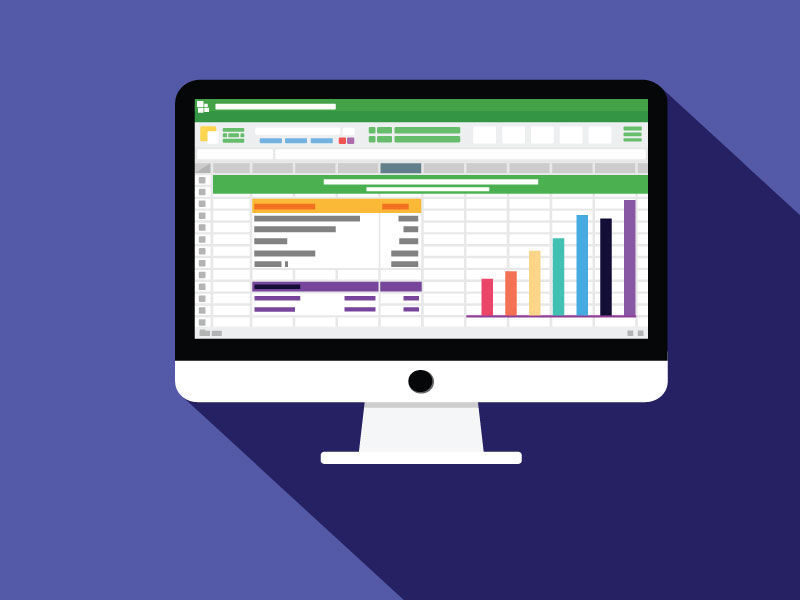Have you ever thought there must be an easier, faster, and more transparent way to monitor budget variance and create and distribute variance reports? If your college or university finance department is still using spreadsheets or Excel for budgeting and variance reporting, this has undoubtedly crossed your mind.
More than half (55%) of higher education institution finance leaders say their industry lags others in adopting modern budgeting and financial planning tools, and 75% believe they should be doing more to leverage financial and operational data to inform strategic decisions.1
A monthly variance review process is a best practice to maintain more accurate budgeting. But as you know, the manual processes associated with spreadsheets lead to unintended errors, skewing budgets and reports and requiring considerable time, effort, and frustration to find and correct anomalies. Without tight security permissions and version control, maintaining the integrity of the report can also be an issue when relying on Excel spreadsheets.
The Axiom™ Higher Education Suite employs automated and transparent processes to speed data collection, aggregation, and reporting, giving you more time to analyze the data and react to any variances. Axiom gives you the strength and flexibility to create and distribute variance reports and other information quickly and easily with a familiar, intuitive Excel-like interface.
Here are 4 ways that Axiom beats spreadsheets and Excel.
#1 — Distribute Variance Reports Consistently and Securely
To distribute a report using Excel, you need to pull the data out of the spreadsheet, transfer it to a business intelligence or reporting tool, then schedule distribution to stakeholders.
With Excel, there is no automated method to route the report to the appropriate people based on college, school, department, or job title. You either have to send individual reports to individual recipients or give more people access to a report than you might want. Does the chair of the English Department need access to the variance reporting for the School of Business or vice versa? And do you or your staff want to reconcile changes, comments, and notes from several spreadsheets back into the main document?
With Axiom, you can distribute reports based on department, job title, or other fields that you specify. Set the distribution and security parameters once, and reports go to the appropriate people every time.
Report distribution should be consistent throughout the institution, providing a single source of truth to all budget stakeholders and eliminating the need for users to search through voluminous documentation to identify variances that affect their departments.
#2 — Take the Complexity Out of Compiling, Viewing Forecasted Variances
Unless the budget document is linked to a variance report in Excel, it becomes outdated the moment it’s created. To remain current, a variance report must be manually linked to other tabs in a spreadsheet or other spreadsheets, a difficult and complex undertaking in Excel. As new data comes in, these processes must be repeated to stay current on reporting.
The links between budgets and variance reports are pre-built into Axiom, creating dynamic documentation that’s always current. The report automatically refreshes with the latest information as updated budget information is pulled from the general ledger (GL) or other source systems. Some colleges and universities update GL data daily, so the variance reports update on the same schedule. Users can access the system at any time to see their latest performance based on the most recent data or receive periodic emails on a schedule they set.
Within Axiom, variance data can be automatically included in budget or scenario forecasts to determine how the current state would impact future months. This feature eliminates much of the manual effort required to prepare forecasts, which can be updated with actuals to provide a complete picture of an institution’s financial position. The interface in Axiom allows you to drill through to deeper levels in the report to help understand the root cause of variances.
#3 — Centralize Collection of Variance Comments
Modern performance management tools like Axiom let institutions capture and collect comments from budget stakeholders to explain variances between monthly budgets and actuals in a single location.
While it’s technically true users could put comments in individual spreadsheet cells, it would be challenging — if not impossible — to maintain comment threads as variance documents evolve and are updated. Is that a job you or someone in finance wants to perform as stakeholders input their comments?
Think of it as the difference between a snapshot in time with a static Excel spreadsheet and a dynamic view of variances, where new data automatically powers updated reporting. Comments persist throughout the updated document, allowing users to more easily collaborate and providing a record of comments over time. It also is important to consolidate comments in one central location for the finance team and other relevant senior leaders to view.
#4 — Get Variance Alerts on Your Schedule
In many cases, budget stakeholders may benefit from immediate notification of a significant budgetary swing so they can review it and act immediately.
With conditional formatting in Excel, you can set parameters for specific cells, turning them a different color when a value falls out of range. However, this method requires that you remember to look at that spreadsheet to see the changes.
Axiom automatically alerts users to variances through their preferred method — email or within the application. You can set up an alert to flag outliers or variances beyond a certain percentage or dollar value and receive a notification the moment the variance is detected. Instant notifications can potentially head off obvious bookkeeping errors or potential instances of fraud that using spreadsheets wouldn’t reveal until much later and after a great deal of due diligence.
When a defined variance falls out of range, you receive an instant alert that prompts a request for review. And what could be easier than that?
Syntellis’ Axiom Higher Education Suite streamlines the budgeting and variance reporting process, creating efficiencies across departments, functions, and schools that lead to better, data-based decision-making.
1 2021 Higher Education Financial Technology Trends. Syntellis Performance Solutions, 2021.
Learn how Axiom empowers higher ed budgeting:

University of Massachusetts Unifies Budgeting Across Campuses

Labor Planning with Axiom Budgeting and Forecasting


